
Humidifiers are one of those small home appliances that families never invest in until they realize the benefits having one provides. They are particularly popular if you have dry air in the home, which can be the case especially during the winter months when the heat is running full blast (but also in summer, too). Humidifiers can help you breathe and sleep better, but have other benefits as well.
Let’s delve deep into humidifiers, what they do, how they work, what types are available, and why to consider one for your home.
Table of contents
- What is a humidifier?
- Why would you use a humidifier?
- Tips for using a humidifier
- Types of humidifiers
- Key features you should consider when choosing a humidifier
- How is a humidifier different from a dehumidifier and air conditioner?
What is a humidifier?
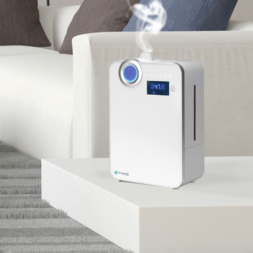
A humidifier is a small appliance designed to improve the air quality in your home when it gets too dry. They work by converting water to mist or vapour that helps increase the level of humidity or moisture in the air. Depending on size and power, they can be used for an entire house or apartment, a level of the home, in a specific room, or even in a building. Add water, plug it in, then run the unit on the setting you prefer.
Some have timers, different levels to choose from, and even smart Wi-Fi capabilities. It’s important that they are cleaned thoroughly to prevent mold or bacteria inside, and require some additional maintenance, including changing filters with some types and adding water as needed.
Why would you use a humidifier?
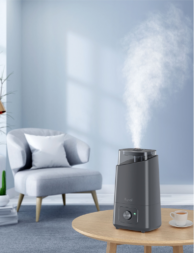
The primary benefit with a humidifier is that it adds moisture to the air. Dry air can lead to dry skin, sinus issues, and even things like nose bleeds through irritation of the nasal passages. It could even lead to afflictions like sinus infections and dry eyes. Too much dryness in the air can also cause chapped, dry, and itchy skin, especially for those who suffer from ailments like psoriasis.
Dry air can also affect house plants, wood furniture, and items like musical instruments. It isn’t just furniture, but dry air can lead to shrinkage with structural beams and posts in the home, and can even cause floors to sag, ruining hardwood floors as well as molding. It can also impact antiques you might have in the home, or potentially damage electronics.
Adding moisture to the air can make a room feel warmer, thus reducing the amount of heat you need to run since you can drop the thermostat by a degree or two. It can also reduce static and help you sleep better. This is especially so if you’re sick or suffer from conditions like asthma or allergies.
Speaking of which, the moisture a humidifier adds to the air can potentially help reduce the spread of airborne viruses, like the flu.
Tips for using a humidifier
There are a few things to keep in mind when using a humidifier. While adding moisture to dry air is a good thing, you need to be cognizant of how much. Too much moisture in the air can lead to condensation, which can, in turn, result in the growth and spread of mold and mildew. Ideally, keep the level of humidity in the home at the sweet spot of about 35-45%, and never over 55-60% to prevent this. Some humidifiers will report this number so you know when to shut them off, or you can get a third-party device to track not only temperature in a room but also humidity. Sometimes even devices like air purifiers and baby monitors report the humidity in a room.
When filling a humidifier with water, it’s best to use filtered water, which will help prevent bacteria growth and a build-up of sediment, scale, and water deposits in the tank. Either way, you should clean out the tank often, anywhere from every few weeks to months, depending on how often you use it. In many cases, this might simply involve wiping down the surface with warm water and mild detergent, or a solution of water and vinegar. Most humidifiers have refillable tanks, in which case you should never submerge the entire unit in water. Check the owner’s manual and follow the guidelines for the best advice when it comes to cleaning.
Types of humidifiers

There are three main types of humidifiers.
Evaporative cool mist humidifiers
These are also known as evaporators and are designed to blow water through a special filter that then releases the water as mist into the air.
Cool mist evaporative humidifiers are the most popular type of humidifiers since it’s simple to use and safe in households with kids, pets, and the elderly because it doesn’t require boiling the water first. Unlike ultrasonic humidifiers, however, which expel water droplets that evaporate in the air, cold mist humidifiers evaporate the water inside and release it through a filter. However, since droplets aren’t released, there won’t be any dampness in areas nearby where water can accumulate.
However, because cool mist humidifiers use filters, these will need replacing over time. Thus, they require that maintenance as well as an added recurring cost.
Warm mist humidifiers
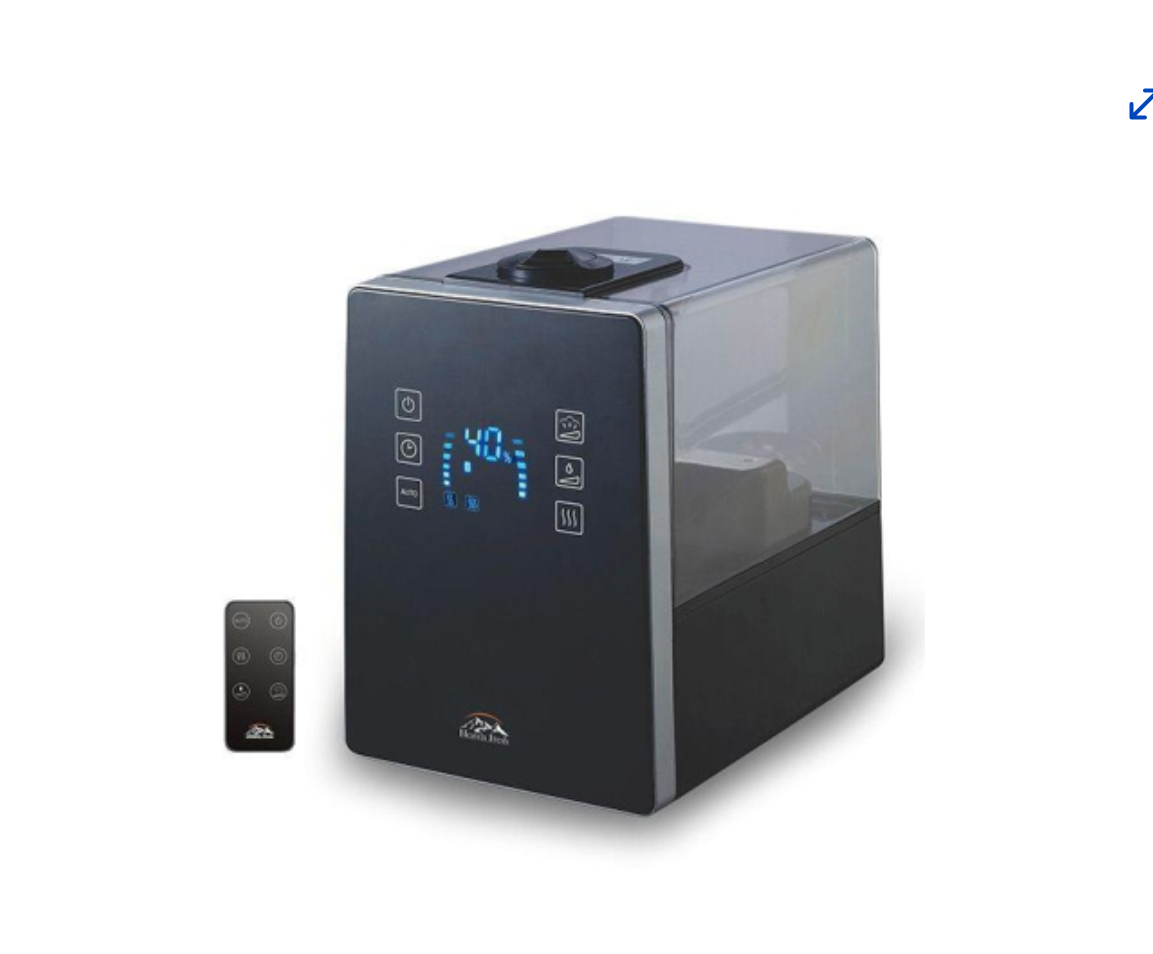
Working similarly to cool mist humidifiers, warm mist humidifiers add an extra step to boil the water first, which then produces sterilized mist. Some warm mist humidifiers have the option to expel both warm or cool mist, depending on your need or preference, making them versatile options.
Warm mist humidifiers might be preferred by those with severe allergies, for use when you’re sick, or for a baby’s nursery. The water releases as steam vapour and because there’s no filter, they tend to be less expensive. They often come with medicine cups for adding cold or flu medication since the vapour is ideal for helping clear sinus passages and sooth symptoms, like cough and congestion.
Because warm mist humidifiers require heating the water first, however, they use more electricity than cool mist ones.
Ultrasonic humidifiers
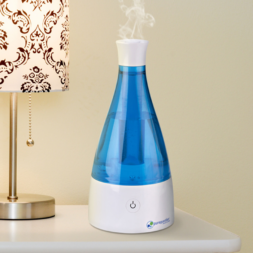
One of the most high-tech options, ultrasonic humidifiers use metal plates that vibrate quickly to create a fine mist that is then blown out from a fan.
Ultrasonic humidifiers are popular because they are safe to use, don’t require filters, run efficiently, and tend to be affordable. Sometimes, it should be noted, the terms ultrasonic and cool mist humidifiers are used interchangeably since they are similar to one another. But unlike an evaporative cool mist humidifier, ultrasonic humidifiers send the water into the air as droplets that then evaporate while evaporative cool mist humidifiers evaporate the water inside before releasing the evaporated water into the air as mist.
Because water is released as droplets through ultrasonic humidifiers, they could end up adding too much moisture to the air. So, they should be used on low settings or sparingly, unless a room or home is extremely dry and the humidity levels are closely monitored to prevent too much moisture from being added.
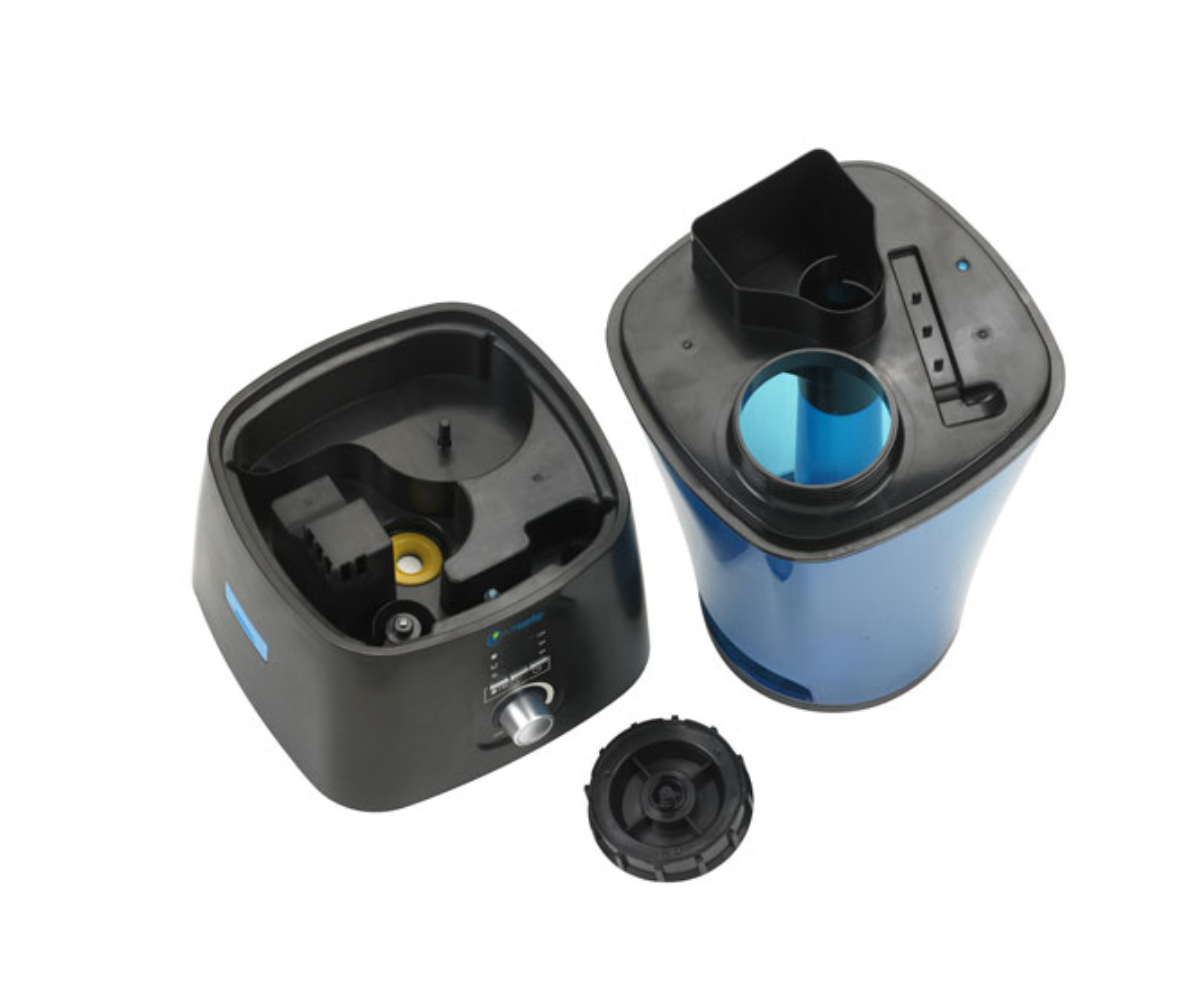
Note that if there are substances in the water, however, they will also be released with the droplets since there’s no filter. The compromise with not having a filter means cleaning is even more critical. It’s also more important to use filtered or even distilled water versus tap water with these types of humidifiers to limit the amount of mineral content that could end up in the air with the droplets.
Ultrasonic humidifiers tend to be small, which makes them popular choices for small rooms or apartments, or for placing in a tight spot. They can also run quieter than evaporative humidifiers. With that said, keep in mind that the vibrations produce ultra-high frequency sounds that you won’t hear but a dog might. If you have a furry friend with sensitive hearing, this could factor into your decision on which type to purchase.
What are the key features you should consider when choosing a humidifier?
Now that you understand the different types of humidifiers and have potentially narrowed down the decision in terms of which kind you want to get, what features are important?
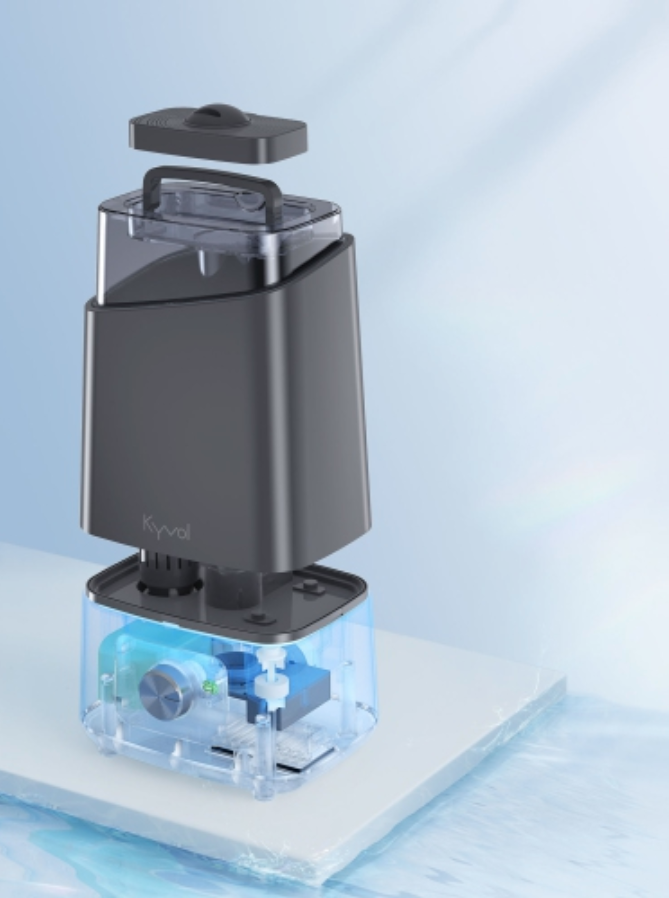 Size of the reservoir
Size of the reservoir
If you want to spend less time tending to the humidifier or tend to have very dry air in the home, make sure to choose one with a larger reservoir that won’t need to be refilled as often. Conversely, for a small room or for adding a little bit of humidity to the air, a smaller unit with a small reservoir might suffice. Look at how easy it is to refill the tank as well. Does the reservoir just have a flap or small opening to pour water inside, requiring a funnel-like cup, or can it be pulled all the way out for easy pouring?
Automatic shut-off
As with any home appliance, if the humidifier has an automatic shut-off feature, either when it detects enough humidity in the air or when the tank is empty (or both), this will come in handy so you don’t have to keep as watchful an eye on it. This will also help reduce electricity bills since it won’t be running when it doesn’t need to be. Auto shut-off also helps avoid adding excessive amounts of moisture being added to the air when it doesn’t need it should you fall asleep, or leave for the day, and forget that it’s on.
LED indicators
Most humidifiers have LED indicators that advise of important things like when the tank is empty or the filter needs cleaning or replacing. These indicators can also note what setting or level you choose, or even a timer, which can come in handy if you want it to run in the morning after you leave for work but have it shut off after a few hours. A screen that reports information like humidity levels in the room thanks to a built-in sensor is even better.
Quiet operation
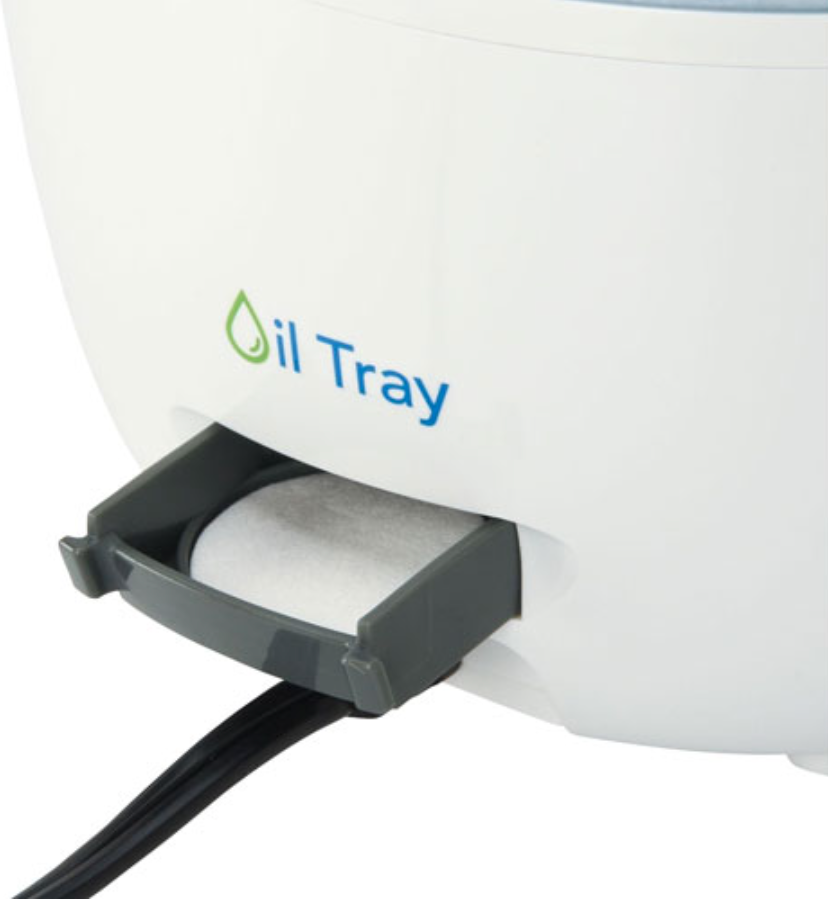
If the humidifier will be running for long periods of time, particularly in rooms like a home office or bedroom overnight, you want to make sure that it’s quiet and won’t distract you from your work or keep you up at night.
Aroma or other added solutions
Some humidifiers let you add scent droplets for calming aroma through an aromatherapy or oil tray, effectively doubling as diffusers to freshen the room, or help you de-stress and relax. Others, as noted, such as warm mist humidifiers, let you add cold/flu medicine, which will be welcome if you’re using the humidifier to help you breathe better and relieve symptoms of a cold. This might be worth looking into if you think you will use that option.
Smart functions and/or remote
The highest tech humidifiers include smart functions so you can control them remotely from a smartphone app over Bluetooth and/or Wi-Fi. This is great for being able to make adjustments without walking up to the unit, or even while you’re away from the home. Others might include a remote so you can at least adjust from the comfort of the couch or your office chair.
Size of the unit
Size will depend on where you want to put it and how big the room or space is that you want to humidify. For an open concept basement or large bedroom, for example, you might want a large, floorstanding model that can sufficiently work to add humidity to the entire room. Conversely, to place by your home office desk, in the kitchen, or in a baby’s nursery, a smaller, tabletop unit might suffice.
Maintenance
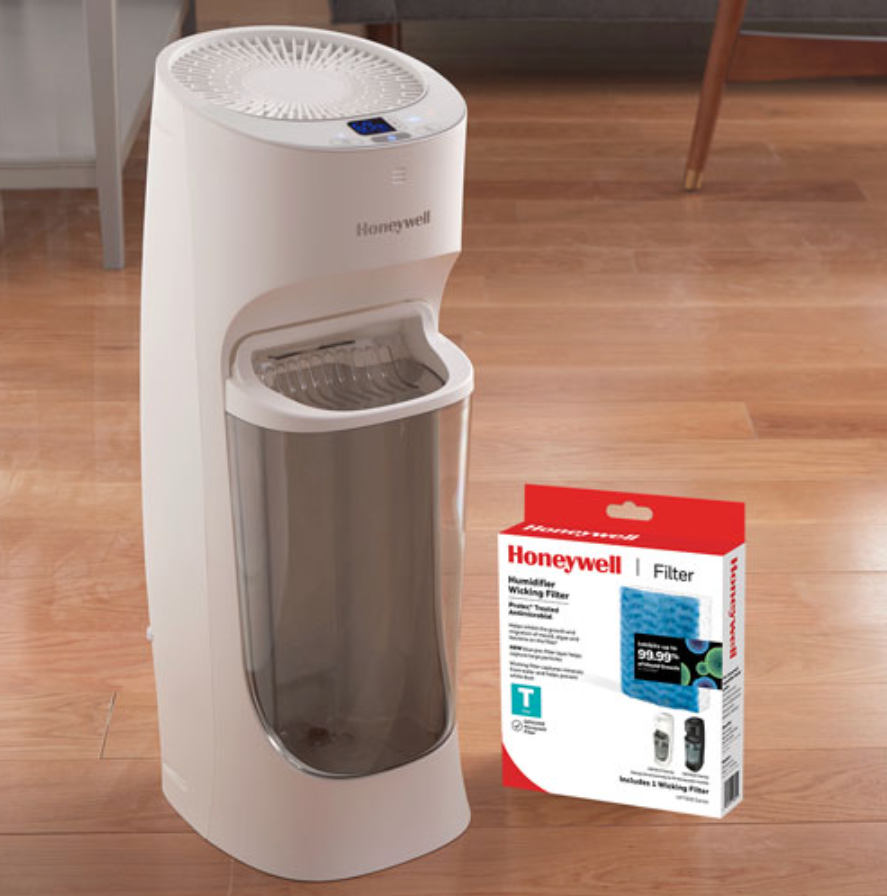
Every humidifier requires some type of maintenance in order to run efficiently and effectively. But a model that reduces how much time you have to spend keeping it running and in tip-top shape will be appreciated, particularly for busy households. Models with a removable water reservoir are easier to clean. Look into how often the filters would have to be changed and the cost of replacement filters so you can have a full view of how much the appliance will cost each year. With regular use, a humidifier filter should be changed every 1-3 months to prevent dust and debris from being expelled into the air along with the water vapor or mist.
Other handy features
Look at other features that might make sense depending on where you plan to use the humidifier, like wheels on a large unit you plan to move from room to room, or a built-in night light for one that will be situated in a child’s room. Some can serve other functions as well, like work as an air purifier, heater, or fan.
How is a humidifier different from a dehumidifier and air conditioner?
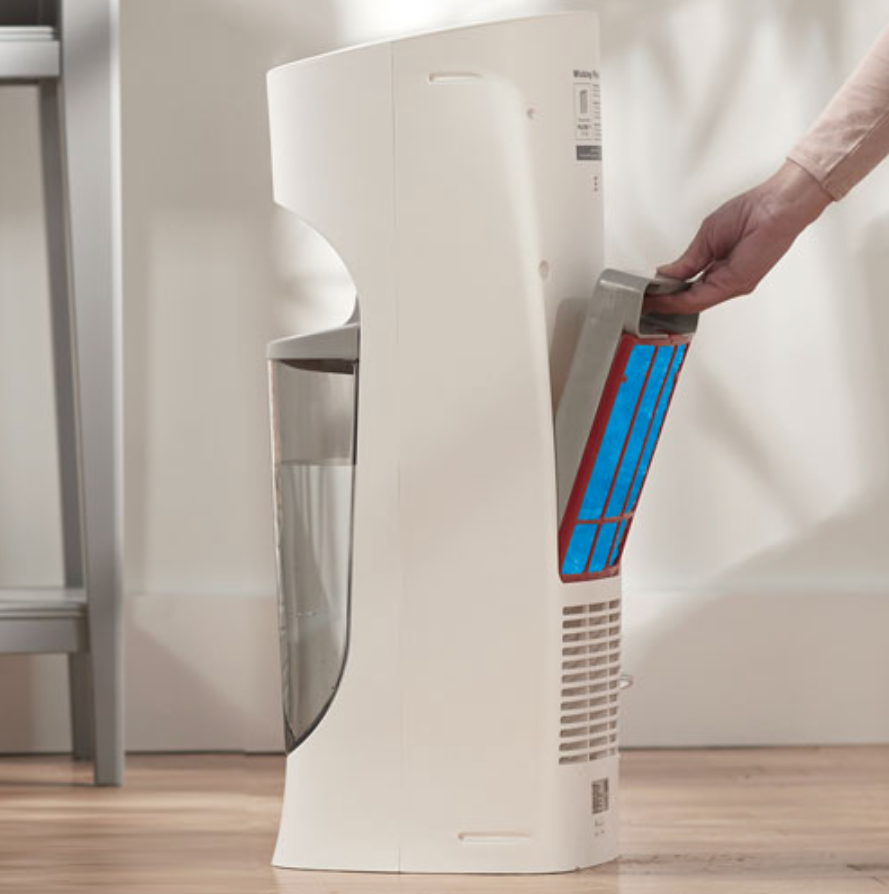
As the name implies, a dehumidifier performs the opposite function to a humidifier, removing excess moisture and dampness from the air. They are most commonly used in rooms like a basement, laundry room, or cellar. Like humidifiers, they help prolong the life of things like wood, preventing it from rotting, as well as books, records, and other precious items. They also help prevent mold growth on spots like window sills. If you have the opposite issue of dry air, opt for a dehumidifier instead.
An air conditioner, meanwhile, is designed to provide cool air in a room that is hot, which can also help prevent moisture build up due to excessive humidity. Check out our informative air conditioner buying guide for details on the different types of air conditioners and how and why you would use one. If your issue is too much moisture during the summer months, you might want to consider an air conditioner with a built-in dehumidifying function.
Take the next step

If you feel like your home and your health could benefit from a humidifier, adding much-needed moisture to excessively dry air, review this guide once more, choose the model that makes the most sense, and have a look at the various humidifiers you can buy at bestbuy.ca






